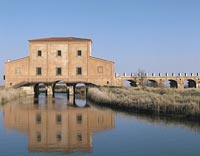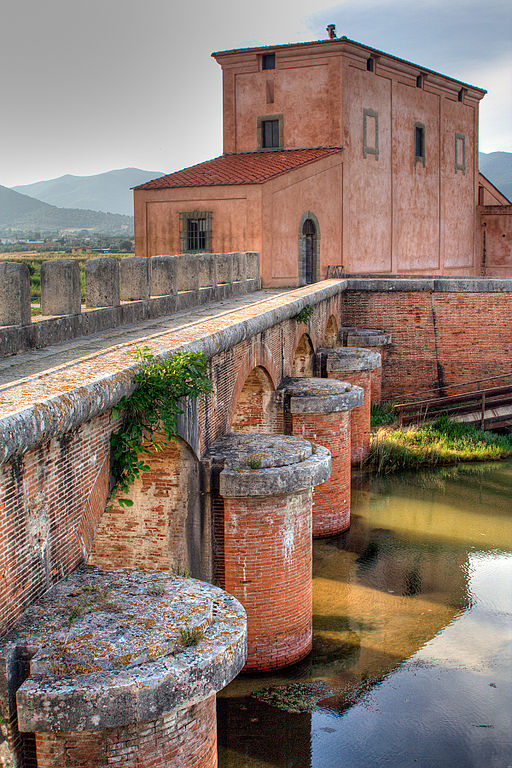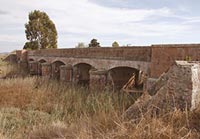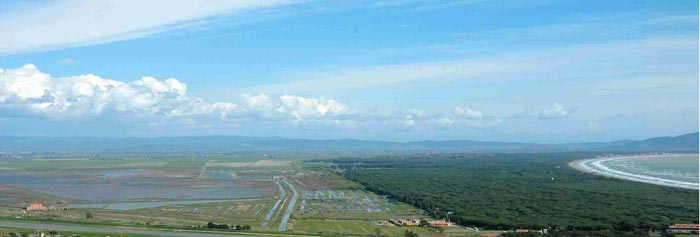 |
La Riserva Naturale della Diaccia Botrona - The Natural Reserve of Diaccia Botrona |
La Riserva Naturale della Diaccia Botrona - The Natural Reserve of Diaccia Botrona |
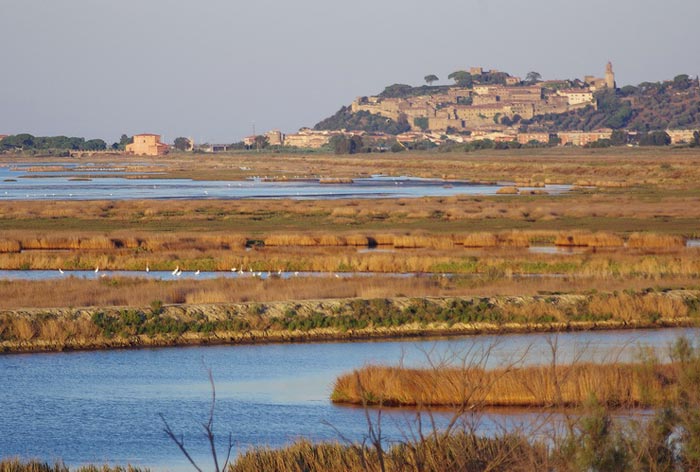 |
The Natural Reserve of Diaccia Botrona, Casa Rossa Ximenes and Castiglione Pescaia |
There is a visitors centre within the Riserva Naturale Provinciale Diaccia Botrona and guided boat tours are available through the marshes. Entrance is free.
|
|||
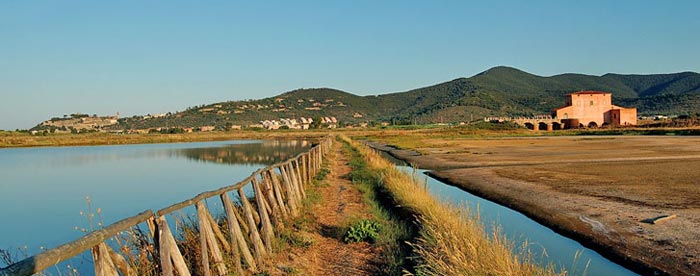 |
|||
|
|||
| Also in Castiglione della Pescaia, 1 km inland, the sluice on the San Leopoldo canal is one of the barrage works conceived to channel and discharge the waters of the large Castiglione Lake into the sea. The bridge with the lock is situated on the San Leopoldo canal, 1 km inland from the bridge that crosses this canal on the Collacchie road to (S.S. 322) Grand Duke Ferdinando I de’ Medici attended to the realisation of many hydraulic works, in 1592 instituting the Canals Office of Grosseto, which was the most important measure adopted to remedy the area’s hydraulic precariousness. Indeed, for the first time, the ruler appointed a local decentralised authority to coordinate, control and define reclamation initiatives in a province that was scarcely populated and perpetually devastated by the incursions of wild livestock that caused the systematic destruction of any and all hydraulic constructions. During the Lorraine Regency, a team of engineers launched the integral reclamation plan of Maremma, which was subsequently supported by Grand Duke Peter Leopold. With its realisation entrusted to Leonardo Ximenes who described its features in his famous work, Della Fisica riduzione della Maremma senese, this project abandoned the previously attempted idea of filling Castiglione Lake, and instead aimed at exploiting it for production by means of a systematic and rational regulation of its waters. "Refreshment" canals were dug in order to allow the regulated introduction of waters from the Ombrone River into the lake, so as to avoid stagnation. Furthermore, in order to control and facilitate the outflow of lake waters towards the sea, the Floodgates Building was constructed on a project by Ximenes, and the Canale Reale or Maestro was excavated nearby. Pietro Ferroni, who succeeded Ximenes in 1781, retrieved the old project to drain Castiglione Lake and carried out its partial filling. The Lake’s definitive filling was carried through in the course of the first half of the 19th century, thanks to the study by Vittorio Fossombroni, which implemented the most impressive reclamation measure of Maremma in the provinces of Pisa and Grosseto. Launched with a decree by Grand Duke Leopold II on November 27, 1828 and set forth by Fossombroni in his famous, Memoria sulla Grossetana [Memorial on the Grosseto Territory], the project was carried out under the technical direction of Alessandro Manetti. The lake water was collected in five reclamation basins, and then emptied into the sea by means of three specially excavated effluents equipped with sluice-gates: the Bilogio, San Leopoldo (still visible today) and San Rocco. The beds of various canals were dug, little subterranean tanks were built and the tract of the Via Emilia-Aurelia between Cecina and Grosseto was modified: using the most sophisticated technologies and with a considerable outlay of human and economic resources, it was thereby possible to give a decisive turn to disposing of this difficult territory.
|
|||
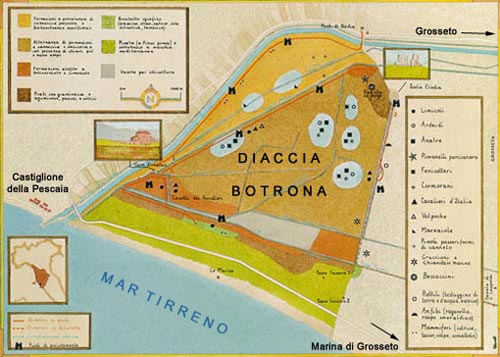 |
|||
|
|||
|
Gallería Fotográfica della Costa Toscana
|
||||
 |
 |
|||
Il Padule della Diaccia Botrona e la Casa Rossa Ximenes
|
La Casa Rossa Ximenes | La Casa Rossa Ximenes |
||
 |
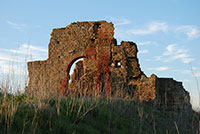 |
 |
||
Casa Rossa Ximenes, Castiglione della Pescaia
|
L'abbazia di San Pancrazio al Fango
|
Il Padule dall'Isola Clodia
|
||
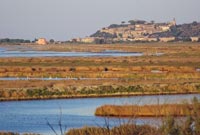 |
 |
|||
La Riserva Naturale della Diaccia Botrona e Castiglione della Pescaia
|
Anello Riserva Naturale della Diaccia Botrona, sentiero n° 31 o RET 010 | Anello Riserva Naturale della Diaccia Botrona |
||
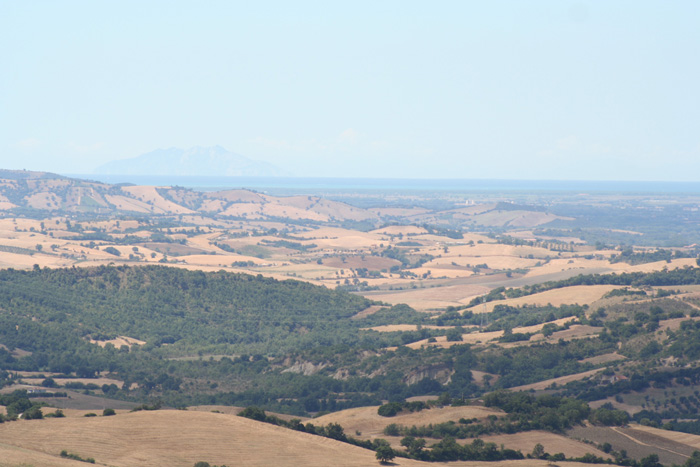 |
||||
Podere Santa Pia, situated in a particularly scenic valley, which overlooks on the hills around Scansano, up to the Maremma seashore and Monte Christo. |
||||

